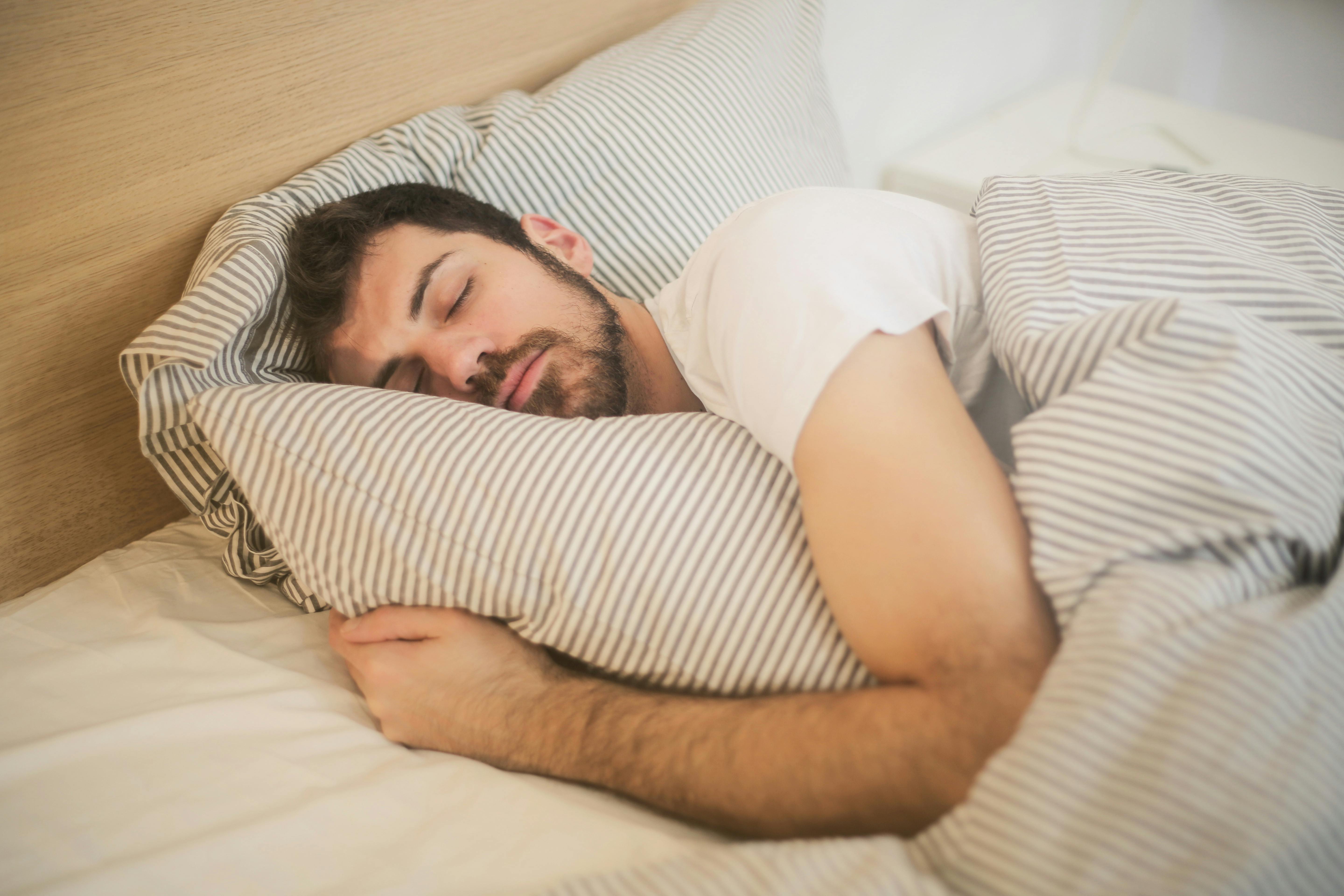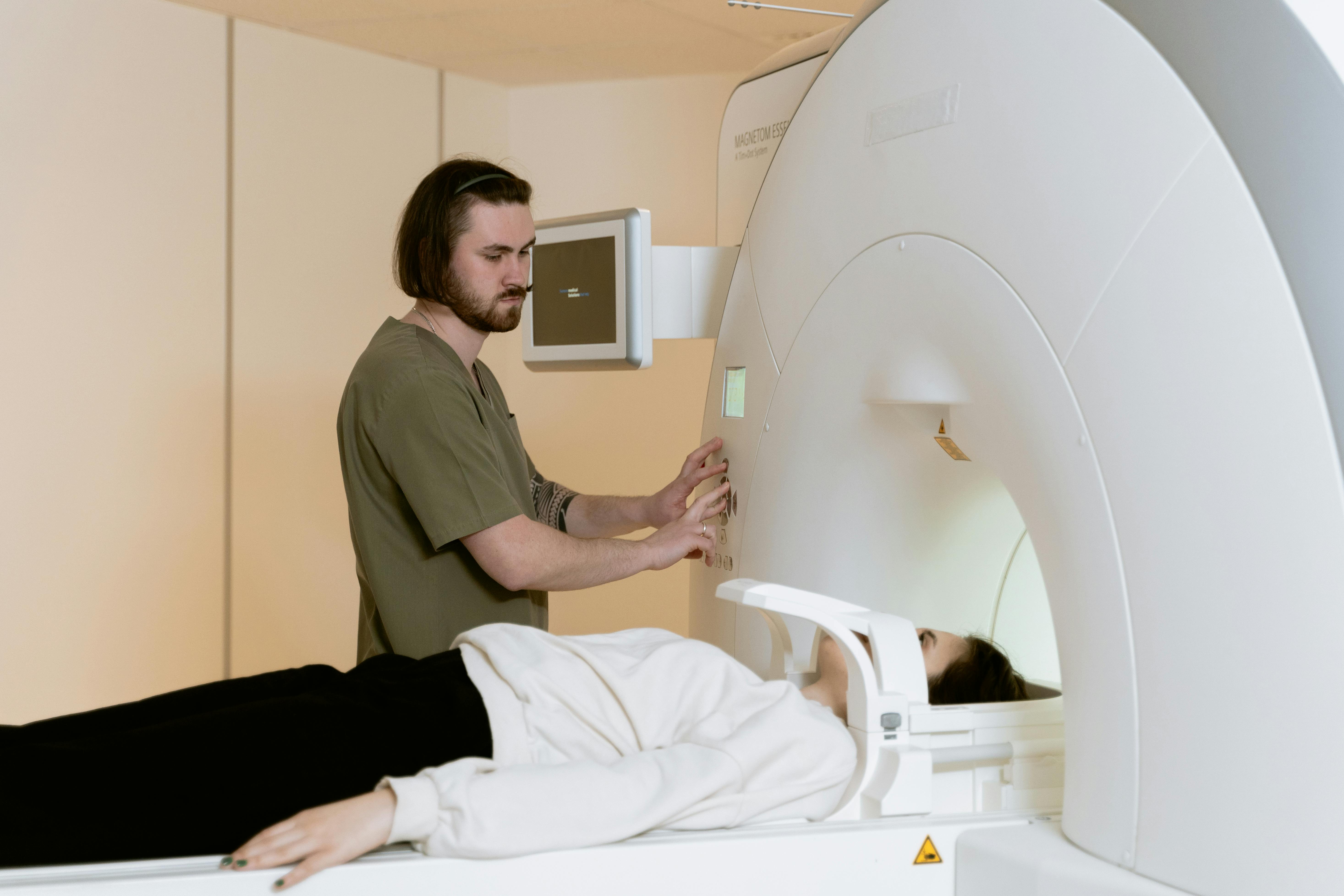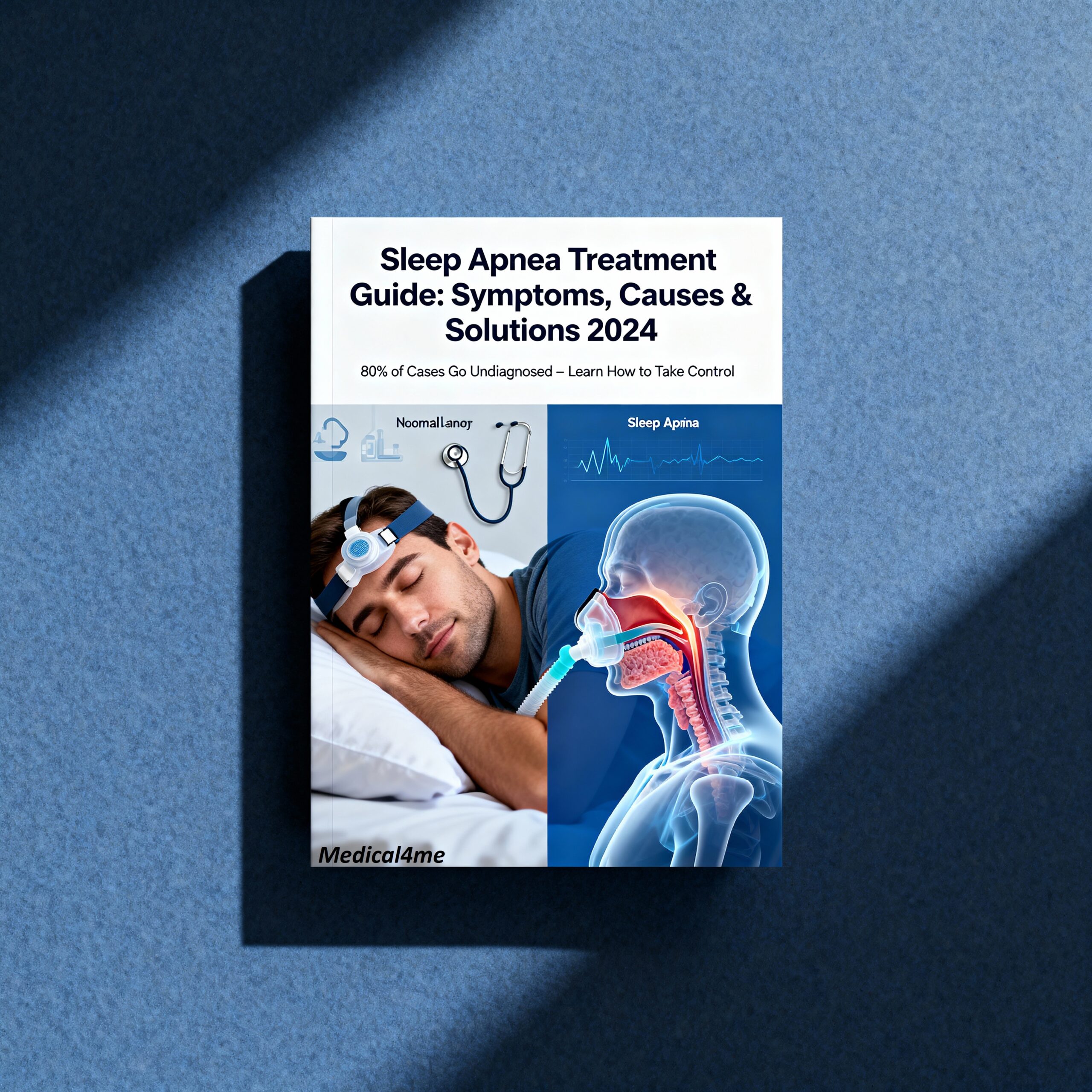Sleep Apnea: Understanding the Silent Night Thief That Affects 936 Million People Worldwide

Did you know that every night, one in five adults stops breathing repeatedly while they sleep? And here’s the kicker – 80% of them don’t even know it’s happening. Sleep apnea isn’t just about loud snoring or feeling tired. It’s a serious medical condition that’s been quietly wreaking havoc on millions of lives, relationships, and health outcomes across the globe.
Look, I’ve seen patients who’ve struggled for years with unexplained fatigue, brain fog, and health issues, only to discover that sleep apnea was the hidden culprit all along. The good news? Once you understand what you’re dealing with, this condition is highly treatable. Actually, many of my patients tell me that getting diagnosed was like finding the missing piece of a puzzle they’d been trying to solve for years.
So, whether you’re here because your partner complains about your snoring, you’re waking up exhausted despite sleeping 8 hours, or your doctor mentioned something about a sleep study, you’re in the right place. Let’s uncover what sleep apnea really is and, more importantly, what you can do about it.
What is Sleep Apnea? The Complete Medical Picture
Medical Definition
Sleep apnea is a potentially serious sleep disorder characterized by repeated interruptions in breathing during sleep. These pauses, called apneas, typically last 10-30 seconds but can extend longer, occurring 5 to 100+ times per hour. The condition results in decreased oxygen levels and disrupted sleep architecture, leading to significant health consequences if left untreated.
Think of your airway like a flexible garden hose. Now, imagine someone periodically stepping on that hose while water’s running through it. That’s essentially what happens with obstructive sleep apnea – the most common type affecting about 90% of cases. Your throat muscles relax too much during sleep, causing your airway to collapse like that compressed hose.
But sleep apnoea (yes, both spellings are correct) isn’t just one condition. There are actually three distinct types, each with its own underlying mechanism. Obstructive Sleep Apnea (OSA) is the heavyweight champion, affecting roughly 936 million adults worldwide according to [SOURCE: The Lancet Respiratory Medicine 2023]. Central Sleep Apnea (CSA) is less common but equally serious – here, your brain literally forgets to tell your body to breathe. And then there’s Complex Sleep Apnea Syndrome, which is basically when you win the unfortunate lottery of having both types.
The fascinating part? Your body has this incredible survival mechanism. Every time you stop breathing, your brain panics and partially wakes you up – just enough to restart breathing but not enough for you to remember. You might experience this micro-awakening 30, 50, even 100 times per hour. No wonder you’re exhausted!
Here’s something interesting: sleep disordered breathing exists on a spectrum. On one end, you’ve got simple snoring (annoying but mostly harmless). In the middle, there’s Upper Airway Resistance Syndrome (UARS), where breathing becomes difficult but doesn’t completely stop. And at the severe end? That’s where sleep apnea lives, causing complete airway obstruction and those dangerous drops in oxygen levels.
Recognizing Symptoms and Signs: Your Body’s Warning System
You know what’s crazy? Most people with sleep apnea have no idea they have it. They can’t exactly observe themselves sleeping, right? But your body sends out warning signals – you just need to know what to look for.
Nighttime Symptoms (What Your Partner Notices)
🟢 Mild Signs: Loud, persistent snoring that seems to get worse when lying on your back. Light sleep talking. Occasional restless movements.
🟡 Moderate Warning Signs: Snoring punctuated by silent pauses followed by gasping or choking sounds. Frequent position changes. Night sweats not related to room temperature. Getting up to urinate multiple times (your body’s confused response to stress hormones).
🔴 Severe Red Flags: Witnessed episodes where breathing completely stops. Violent gasping or choking that actually wakes you. Sleeping in unusual positions (like propped up on multiple pillows) just to breathe better.
Daytime Symptoms (What You Experience)
Now, the daytime symptoms are where things get really interesting. And frustrating. Because they’re so… ordinary. Fatigue? Who doesn’t have that? Morning headaches? Must be stress. But when you put them together, a pattern emerges.
The classic morning headache from sleep apnea feels different from a regular headache. It’s usually on both sides of your head, has a pressing quality (not throbbing), and mysteriously disappears within 30 minutes of waking up. Why? Your brain’s been marinating in carbon dioxide all night due to poor breathing.
Then there’s the exhaustion. Not just being tired – I’m talking about falling asleep at red lights, during conversations, or (terrifyingly) while driving. One patient told me he thought he was developing narcolepsy. Turns out, his sleep apnea was so severe he was getting less restorative sleep than someone who stayed up all night.
Brain fog is another big one. Difficulty concentrating, memory problems, feeling like you’re operating at 60% capacity. Your hippocampus (the brain’s memory center) literally shrinks from chronic oxygen deprivation. But here’s the good news – studies show it can recover with treatment!

Understanding Causes and Risk Factors: Why Me?
Let’s get one thing straight – sleep apnea isn’t your fault. It’s not about laziness or poor sleep hygiene. It’s a legitimate medical condition with complex causes. Understanding these causes helps explain why treatment works and why certain changes can make such a dramatic difference.
The Anatomy Problem
Some people are basically dealt a tough hand genetically. Maybe you inherited a narrow airway, a large tongue, or a recessed jaw. Think of it like trying to breathe through a straw versus a wide tube – the narrower the passage, the more likely it is to collapse. About 40% of sleep apnea risk is genetic.
The Weight Factor
Okay, let’s address the elephant in the room. Yes, weight plays a role – about 70% of people with OSA are overweight. But it’s not that simple. The fat deposits around your neck aren’t just sitting there; they’re actively pressing on your airway. Plus, abdominal obesity pushes your diaphragm up, reducing lung capacity. However, plenty of thin people have sleep apnea too. I’ve diagnosed marathon runners, yoga instructors, you name it.
Risk Factors by the Numbers
- Age (40+): Risk doubles every decade after 40. Your throat muscles lose tone, just like everything else.
- Male gender: Men are 2-3 times more likely until menopause, then women catch up (thanks, hormones).
- Neck circumference: Over 17 inches for men, 16 for women increases risk by 85%.
- Family history: Having a first-degree relative with OSA increases your risk by 50%.
- Smoking: Triples your risk due to upper airway inflammation.
- Alcohol use: Relaxes throat muscles; even moderate drinking increases apnea episodes by 25%.
- Nasal congestion: Chronic nasal problems increase risk by 1.8 times.
- Medical conditions: High blood pressure (present in 50% of cases), diabetes (48% higher risk), PCOS in women (5-10 fold increase).
Quick Risk Assessment
If you have 3+ risk factors plus daytime symptoms, there’s a 70% chance you have sleep apnea. Don’t wait for it to get worse – untreated OSA ages your body 10 years faster than normal aging.
The Diagnostic Journey: From Suspicion to Diagnosis
So you think you might have sleep apnea. Now what? Well, the path to diagnosis isn’t as complicated as you might think, but it does require some patience.
Step 1: The Initial Consultation (Week 1)
Your journey typically starts with your primary care physician. They’ll ask about your symptoms, check your throat anatomy, and probably have you fill out something called the STOP-BANG questionnaire. Don’t worry, it’s not as aggressive as it sounds – just eight simple questions that predict sleep apnea risk with about 85% accuracy.
Step 2: The Referral (Week 2-3)
If your doctor suspects sleep apnea, you’ll get referred to a sleep specialist. Here’s where things can get frustrating – wait times can be 2-12 weeks depending on where you live. Pro tip: ask to be put on the cancellation list.
Step 3: The Sleep Study Decision (Week 4-6)
The sleep doctor will decide between two options: an in-lab polysomnography (the gold standard) or a home sleep test. Honestly, most people prefer the home test – sleeping in your own bed with a simple device is way less intimidating than spending the night in a lab looking like a science experiment with 20+ wires attached to you.
Step 4: The Actual Test
If you do the lab study, technicians monitor everything: brain waves, oxygen levels, heart rhythm, breathing patterns, even leg movements. It’s comprehensive but can feel weird trying to sleep naturally while being watched. The home test is simpler – usually just a finger oxygen sensor, breathing sensor, and chest belt. Less data but often sufficient for diagnosing OSA.
Step 5: Results and Diagnosis (Week 6-8)
Your results come back as an AHI (Apnea-Hypopnea Index) score:
- Normal: Less than 5 events per hour
- Mild sleep apnea: 5-15 events
- Moderate: 15-30 events
- Severe: Over 30 events
I once had a patient with an AHI of 89 – basically, he was stopping breathing every 40 seconds all night long. He cried when we showed him the results, finally understanding why he’d felt terrible for years.

Treatment Options Comparison: Finding What Works for You
Here’s where things get interesting – and hopeful. Sleep apnea treatment isn’t one-size-fits-all, and that’s actually good news. It means if one thing doesn’t work, you’ve got options.
| Treatment | Effectiveness | Cost (Annual) | Comfort Level | Side Effects |
|---|---|---|---|---|
| CPAP Therapy | 95% effective | $800-2000 | Moderate (adjustment period) | Dry mouth, mask marks, claustrophobia initially |
| Oral Appliances | 70% effective | $1500-3000 | High | Jaw soreness, teeth shifting, drooling |
| Positional Therapy | 40% effective | $100-300 | High | None significant |
| Surgery (UPPP) | 50-60% effective | $10,000-20,000 | Low (recovery) | Pain, bleeding, voice changes, swallowing issues |
| Inspire Implant | 80% effective | $30,000-40,000 | High (after healing) | Infection risk, device malfunction, tongue weakness |
| Weight Loss | Variable (10% loss = 30% improvement) | $0-1000 | Challenging | None (all benefits) |
The CPAP Reality Check
Let’s talk about CPAP (Continuous Positive Airway Pressure). It’s the gold standard for a reason – it works incredibly well. But can we be honest? The first few nights can be rough. You’re essentially learning to sleep with a gentle windstorm up your nose. Most people need 2-4 weeks to adjust fully.
But here’s what they don’t tell you: modern CPAP machines are nothing like the loud, clunky devices from 10 years ago. Today’s models are whisper-quiet, have heated humidifiers, and even connect to apps that track your therapy. Some have comfort features like pressure relief when you exhale. It’s actually pretty cool technology.
Alternative Options That Actually Work
Not everyone can tolerate CPAP, and that’s okay. Oral appliances (custom-fitted mouthguards that advance your jaw) work great for mild to moderate cases.
For positional sleep apnea (where you only stop breathing on your back), something as simple as a tennis ball sewn into the back of a t-shirt can work. Sounds ridiculous? Maybe. Effective? Absolutely.
Surgery Warning
Surgery should typically be your last resort, not your first. While procedures like UPPP (removing excess throat tissue) can help, success rates vary widely and you can’t undo surgery if it doesn’t work. Always try non-invasive options first unless you have obvious anatomical issues like massive tonsils or a severely deviated septum.
Prevention Strategies: Stopping Sleep Apnea Before It Starts
Can you actually prevent sleep apnea? Well, you can’t change your genetics or anatomy, but you can definitely stack the deck in your favor.
Daily Habits (Every Day Counts)
- Sleep position training: Side sleeping reduces apnea events by 50% in positional OSA
- Avoid alcohol 3 hours before bed (it increases apnea episodes by 25-40%)
- Keep nasal passages clear with saline rinses
- Practice good sleep hygiene: consistent bedtime, cool room, no screens
Weekly Goals
- Exercise 150 minutes per week (reduces OSA severity by 28%)
- Practice tongue and throat exercises (yes, really – they strengthen airway muscles)
- Monitor your weight – even 5% loss can improve symptoms
Monthly Check-ins
- Review medications with your doctor (some worsen sleep apnea)
- Assess stress levels (chronic stress worsens sleep quality)
- Check in with your sleep quality using apps or journals
The most underrated prevention strategy? Treating allergies and nasal congestion aggressively. A study from Northwestern University found that treating nasal inflammation reduced sleep apnea severity by 40% in some patients. That’s huge for something as simple as using a nasal spray!
When to Seek Medical Help: Don’t Wait for a Crisis
Emergency Warning Signs – Seek Immediate Help
- Waking up gasping or choking multiple times nightly
- Chest pain or irregular heartbeat during sleep
- Falling asleep while driving or operating machinery
- Morning blood pressure readings over 140/90
- Witnessed breathing stops lasting over 20 seconds
But honestly? Don’t wait for emergency signs. If your partner says you snore loudly and you’re tired despite adequate sleep, that’s enough to warrant a conversation with your doctor. The average person with sleep apnea waits 7 years before getting diagnosed. Seven years! That’s seven years of unnecessary exhaustion, health risks, and reduced quality of life.
A Patient’s Story: From Exhaustion to Energy
Michael, a 45-year-old accountant, came to see me after his third car accident in two years – all from falling asleep at the wheel. His wife had been begging him to get checked for years. “I thought I was just getting old,” he told me. His sleep study revealed severe OSA with an AHI of 67. His oxygen levels were dropping to 72% (normal is above 90%). No wonder he was exhausted.
Six months after starting CPAP therapy, Michael was a different person. He’d lost 30 pounds without really trying (better sleep regulates hunger hormones), his blood pressure normalized, and he actually had energy to play with his kids after work. “I didn’t realize how bad I felt until I experienced what normal feels like,” he said. His wife jokes that CPAP saved their marriage – and she’s probably not wrong. Stories like Michael’s are why I’m passionate about raising awareness. Sleep apnea is treatable, but only if you know you have it.
Latest Research & Developments: The Future is Bright
The sleep apnea treatment landscape is evolving rapidly. Just in 2023-2024, we’ve seen incredible breakthroughs that are changing how we approach this condition.
The FDA recently approved tirzepatide (Zepbound) specifically for obstructive sleep apnea in obese adults – the first drug ever approved for OSA. In clinical trials, patients saw their AHI scores drop by up to 63%. [SOURCE: FDA December 2024] reports this could be a game-changer for patients that struggle with CPAP.
Researchers at Washington University just published findings showing that a simple blood test might soon diagnose sleep apnea without needing a sleep study. They’ve identified specific biomarkers that indicate OSA with 89% accuracy. Imagine getting diagnosed with a simple blood draw instead of sleeping with wires attached to your head!
AI is also entering the picture. New smartphone apps can analyze your breathing sounds and predict sleep apnea with surprising accuracy. While not diagnostic yet, they’re excellent screening tools. One app correctly identified 88% of moderate to severe cases in a Stanford study.
Perhaps most exciting is the development of hypoglossal nerve stimulation technology. The latest generation of Inspire devices are smaller, have longer battery life (11 years!), and can be controlled via smartphone. Early 2024 data shows 83% of users achieve at least a 50% reduction in their AHI scores.

Frequently Asked Questions
Taking Control: Your Next Steps Forward
Look, if you’ve made it this far, you’re probably recognizing some symptoms in yourself or someone you care about. And that’s actually the hardest part – acknowledging there might be a problem. The path forward is clearer than you might think.
First, don’t let fear or embarrassment hold you back. I can’t tell you how many patients have said, “I wish I’d done this years ago.” Sleep apnea is incredibly common, highly treatable, and addressing it can literally add years to your life. Plus, imagine actually waking up refreshed for once!
Here’s your action plan: Start by tracking your symptoms for a week. Note your energy levels, any morning headaches, and ask your partner about snoring. Take this information to your doctor. If you’re high risk, push for a sleep study – even a home test is better than wondering. And remember, getting diagnosed isn’t a life sentence; it’s a life saver.
The journey from exhausted to energized isn’t always smooth, but it’s absolutely worth it. Whether you end up with CPAP, an oral appliance, or lifestyle modifications, treating sleep apnea will transform your days and potentially save your life. You deserve to wake up feeling like yourself again.
Your future self will thank you for taking action today. Because treating sleep apnea isn’t just about stopping those breathing interruptions – it’s about reclaiming your energy, protecting your heart, saving your relationships, and rediscovering what it feels like to truly rest. Don’t wait another night. Your journey to better sleep starts now.
Quick Action Steps
1. Take the STOP-BANG questionnaire online (free)
2. Download a sleep tracking app to monitor patterns
3. Schedule a primary care appointment this week
4. Visit [ sleep disorders on Medical4Me.com] for more resources
5. Join a sleep apnea support group (online or local)
Medical Disclaimer: This content is for informational purposes only and is not a substitute for professional medical advice, diagnosis, or treatment. Always seek the advice of your physician or other qualified health provider with any questions you may have regarding a medical condition. Never disregard professional medical advice or delay in seeking it because of something you have read on Medical4Me.com.

💬 Share Your Experience
Share your thoughts, questions, or personal tips below. Our community and editorial team value respectful and insightful discussions.